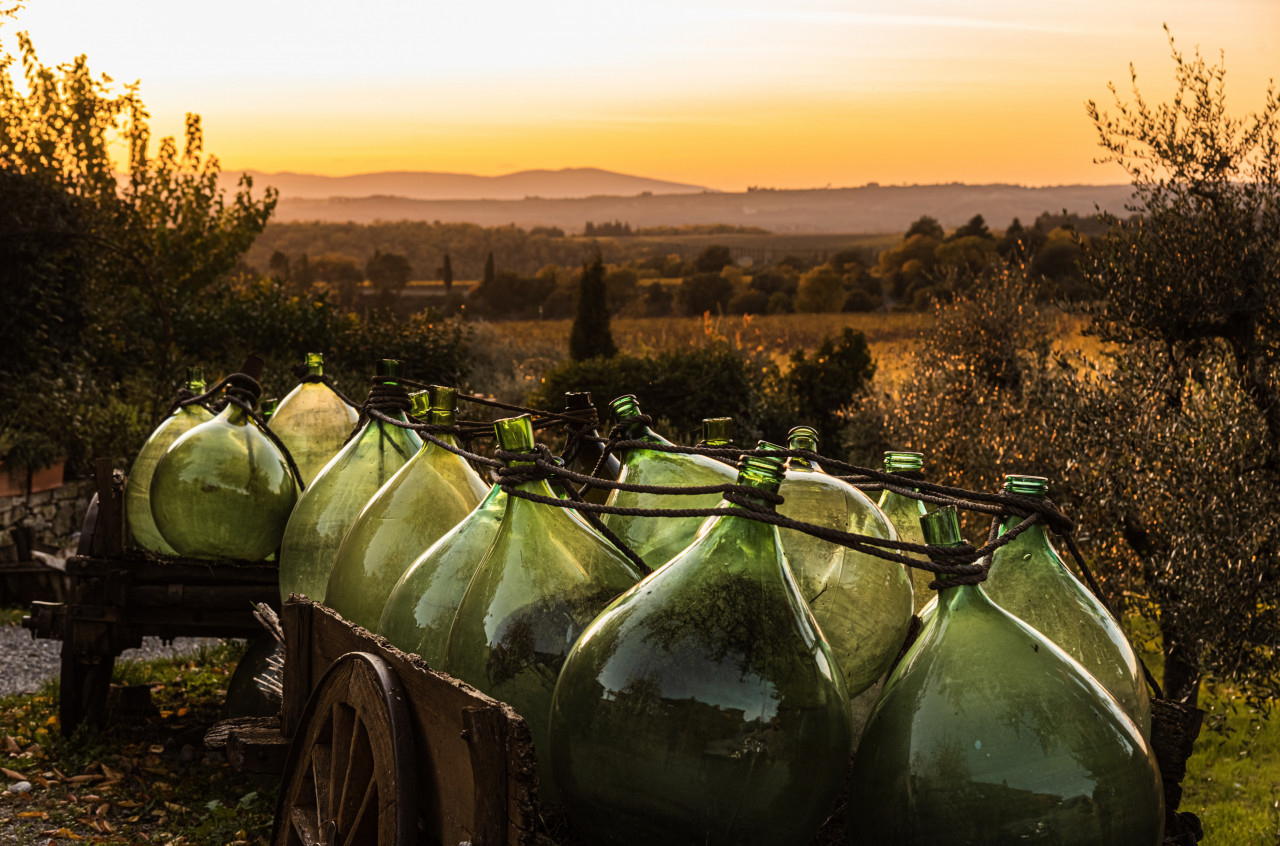FROM AMPHORAS TO BARRELS
From the earliest days of mankind, people have imagined containers to preserve the precious nectar. During antiquity, wine, but also oil and cereals were stored in Dolia, large and very fragile ceramic jars. To encourage trade, the Romans imagined light amphoras with two handles and a neck. Made in pottery workshops in Narbonnaise Gaul, these jars, protected by straw envelopes, bore inscriptions and stamps indicating the type of beverage and its origin. Lyon (Lugdunum), the capital of the three Gauls, was then the stronghold of the wine trade, which arrived from all parts of the Empire before being shipped north. Gradually, amphorae were replaced by larger, stronger and more practical barrels which also vinified the unfermented grape juice. Marked with red hot branding irons, that provided information on the contents, the identity of the producer, the cooper and the merchant.
THE INVENTION OF THE BOTTLE
Sir Kenelm Digby, an English philosopher who owned a glass factory, imagined the first bottle of wine in black glass in 1634. In France, in Bordeaux, the Mitchell glass factory was at that time the largest production unit. It made several original shapes, including the Bordeaux one still in use today. In 1886, the glass bottle was standardized in 75 centilitre format. It was the first container that allowed wine to be stored in a way that reliably protected it from oxidation. The great regions of the hexagon chose to personalize the shape of their bottle. Cylindrical and straight, the Bordelaise remains the most famous. The tall and slender Burgundy is distinguished by its fine neck. There are two traditional bottle shapes in Provence, the corset flute, which, as its name suggests, resembles a generous curved body, and the Côte-de-Provence, whose bottom is wider than the rest of the bottle. However, we often find the wines of the region in Bordeaux bottles that are considered more elegant. Large bottles of champagne with biblical names are particularly popular in a chic and festive setting, the "Magnum" (large in Latin) with a capacity of 1.5 litres is said to have appeared in the 18th century, the Jeroboam with a capacity of three litres owes its name to the kings of Israel. The Methuselah containing 6 litres takes its name from the patriarch who is credited with planting the first vines, the Nebuchadnezzar fifteen litre bottle pays homage to the great king who made Babylon the metropolis of the western world. Very rare and exceptional, some bottles (up to 30 litres) are reserved for exceptional moments. These are all showcases that sublimate the wines of happiness.

